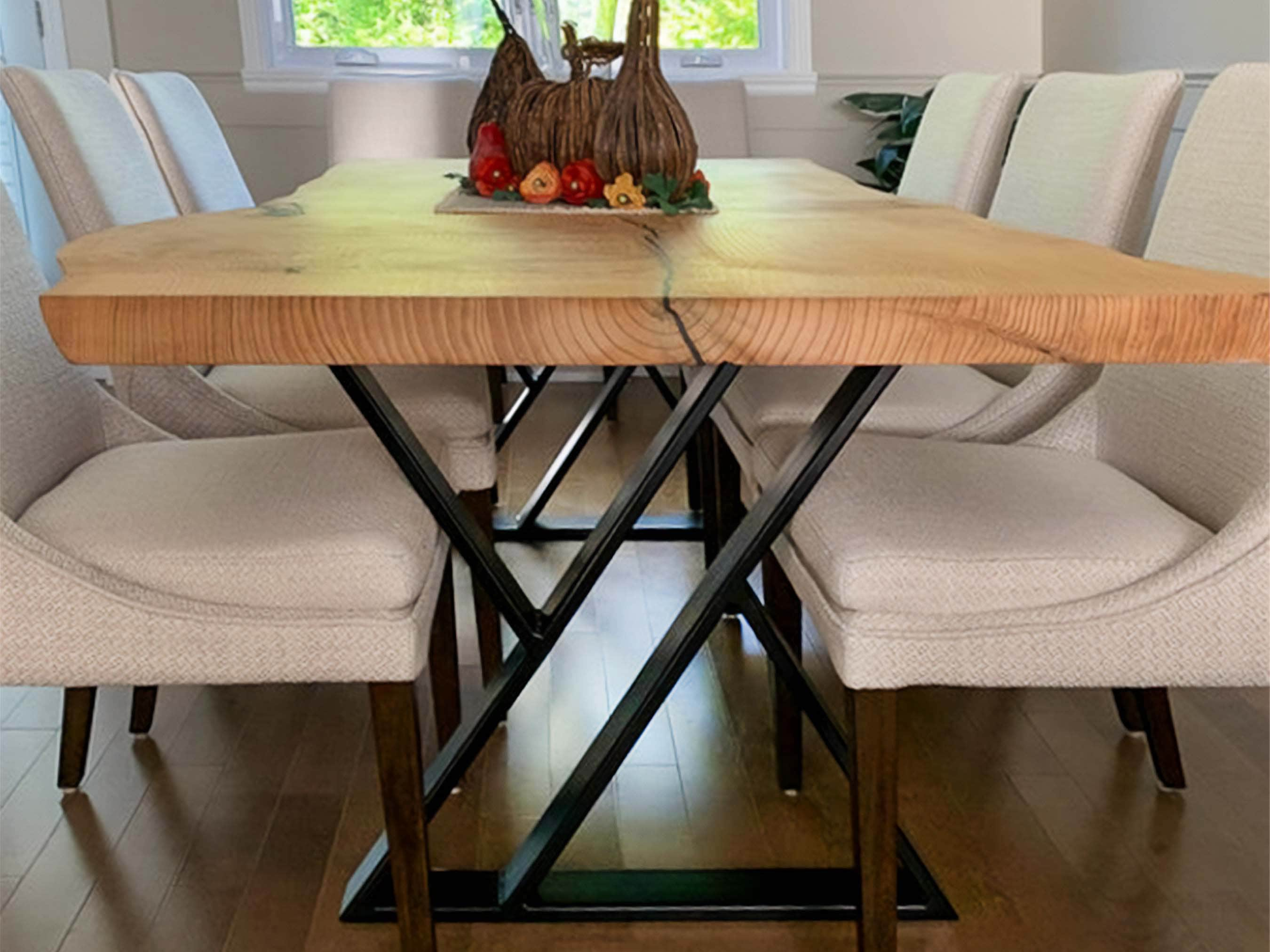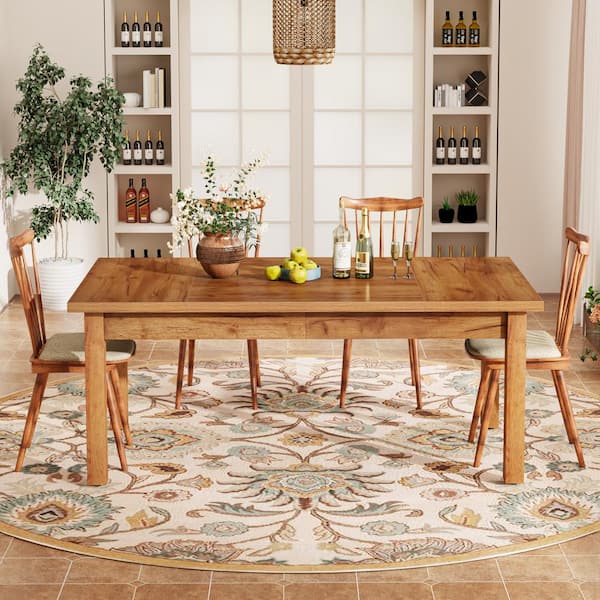Discovering Different Designs for Dining Room Table Legs to Match Your Visual
Discovering Different Designs for Dining Room Table Legs to Match Your Visual
Blog Article
Selecting the Perfect Dining Table: What Styles Job Best for Your Home?
Choosing the perfect table for your home can be a nuanced procedure that balances appearances and performance. Whether your space leans in the direction of conventional sophistication, contemporary minimalism, rustic charm, or commercial elegant, the variety of styles available can deal with varied tastes. Each style offers one-of-a-kind benefits and obstacles that can either enhance or interrupt your eating area's harmony. Comprehending how different products, shapes, and dimensions interact with your existing design is essential. To browse these choices successfully and locate a table that really enhances your home, consider the complying with elements in information.
Assessing Your Area
Assessing the measurements and format of your eating area is a critical initial step in choosing the excellent eating table. Begin by gauging the length and size of the area, accounting for entrances, windows, and various other building features that could affect table placement. This ensures that your table not just fits yet likewise enables comfortable motion around it.
Think about the variety of people you typically amuse. A table needs to fit your home's day-to-day demands while supplying sufficient versatility for periodic guests. Generally of thumb, designate a minimum of 24 inches of table width each to make certain a comfy eating experience.
It's likewise important to preserve suitable clearance around the table. Preferably, there must be at least 36 inches in between the table edge and wall surfaces or various other furniture, making it possible for very easy accessibility and activity. For rooms where chairs with arms or added storage space units like buffets are involved, raising this clearance to 48 inches is a good idea.
Lighting and atmosphere play significant roles too. Make sure that your dining table lines up with existing lighting components or strategy for sufficient lighting solutions. This detailed spatial analysis assurances that your table not just fits physically yet additionally harmonizes with your area's general functionality and visual.
Popular Table Styles

Typical table frequently feature ornate details, bent legs, and abundant timber finishes, evoking a sense of timeless elegance. They are perfect for homes with classic style or those aiming to include a touch of sophistication to their eating area.
Modern dining tables focus on simpleness and clean lines, typically incorporating materials like glass and steel. These tables are perfect for contemporary spaces, giving a smooth and clean look that enhances minimal design philosophies.
Rustic table, on the other hand, emphasize all-natural materials and a handcrafted look - dining room table legs. They typically feature recovered timber and a distressed coating, producing a warm and welcoming environment. These tables work well in farmhouse-style homes or those looking for a cozy, natural feel
Industrial eating tables integrate resources such as steel and wood, usually showcasing a practical aesthetic. This style is fit for lofts or city areas, including a touch of tough beauty and toughness to the dining experience.
Each design uses distinct benefits, making it important to pick one that aligns with your home's total design and your individual preferences.
Material Selections
When selecting a table, the choice of material plays a crucial function in establishing both the table's looks and functionality. Timber, metal, glass, and composite products each deal distinct advantages and obstacles, making it critical to align the product with your home's design and way of living needs.
Wood is a classic and versatile option, offered in selections such as oak, walnut, and mahogany. Known for its sturdiness and heat, wood matches both traditional and contemporary interiors. However, it requires routine upkeep to stop scratches and warping.
Metal tables, often crafted from stainless steel, light weight aluminum, or functioned iron, are commended for their modern-day appeal and effectiveness. They are especially suited for commercial or minimal setups however can be vulnerable to damages and might really feel chilly to the touch.
Glass eating tables bring an air of style and visibility, perfect for smaller sized rooms as they develop an impression of even more area. While very easy to tidy, glass can be at risk to spots and needs cautious managing to prevent chips and fractures.
Composite materials, such as MDF and plywood, offer affordable and customizable solutions, though they may do not have the long life of all-natural materials. Selecting the right product guarantees your eating table is both a practical asset and a visual joy.
Shape and Size Considerations
After figuring out the appropriate material for your eating table, the next consideration is choosing the ideal shape and dimension to fit your room. Alternatively, round tables promote a feeling of intimacy and are excellent for smaller sized dining locations, encouraging conversation by removing corners and making every person really feel equally consisted of.
As a guideline of thumb, assign at discover this info here least 24 inches of table width per person to make sure comfy dining. Furthermore, think about the table's clearance area: there need to be at least 36 inches between the table side and the wall surfaces or various other furnishings. Prolonging tables use versatility if you often organize larger celebrations, providing added seating when required without occupying additional area daily.
Matching Your Design
Selecting a dining table that balances with your existing decoration is crucial in developing a cohesive and welcoming room. A sleek, minimalist table with tidy lines is excellent for a modern home, while a vintage, elaborate table suits a more conventional setting.
If your decoration includes cozy tones and natural materials, think about a wooden table to improve the natural feel. Alternatively, Look At This a glass or steel table might be more suitable in an area dominated by great shades and commercial elements.
Appearance plays a crucial role. A rough-hewn, reclaimed wood table can add character to a rustic space, while a sleek marble surface area can boost a luxurious eating area. Think about the range and proportion of the table in connection to the space size and existing furniture. A well-matched dining table not just boosts aesthetic charm however also enriches the overall eating experience.

Final Thought
Picking the perfect eating table demands careful consideration of area, design, products, shape, and size (dining room table legs). Conventional tables enhance timeless insides with rich wood surfaces, while contemporary tables match modern setups through glass and metal. click here to read Rustic styles present heat using all-natural products, and industrial styles enhance metropolitan atmospheres with raw aspects. Integrating the eating table with existing style ensures both functionality and visual charm, adding to a cohesive and visually pleasing dining area.
Report this page